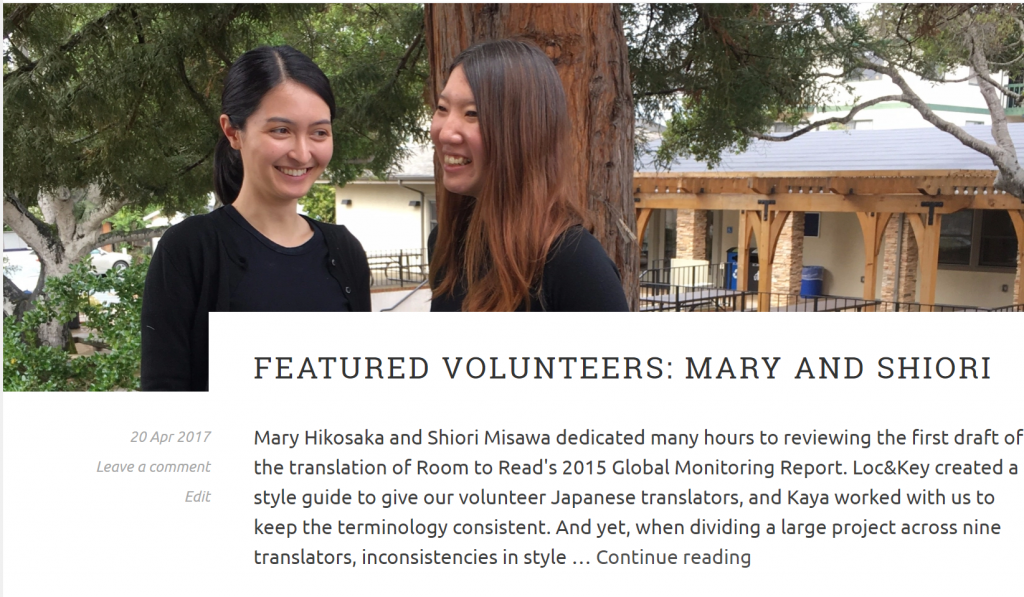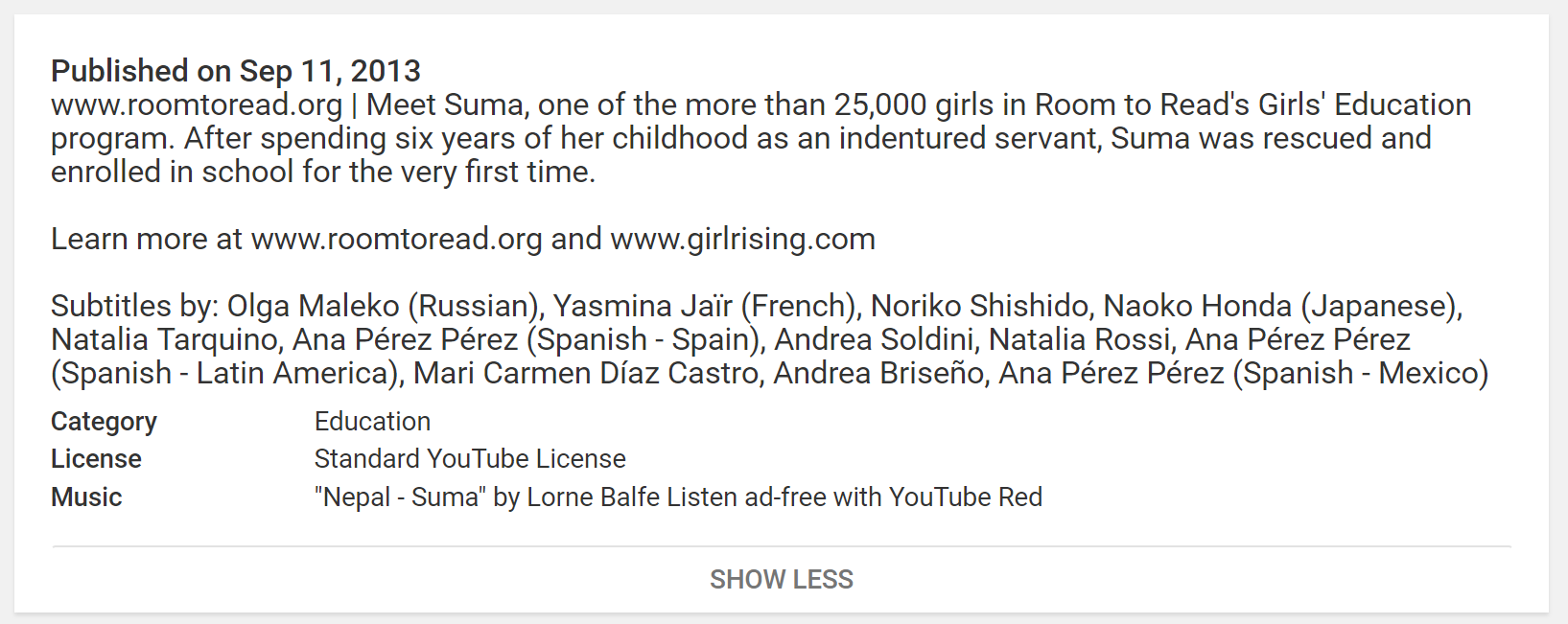Translation Crowdsourcing: Motivating Volunteer Translators
Written on May 19, 2017 – 10:20 pm | by Emily Taylor
Earlier this year, I wrote about recruiting volunteer translators for a localization project to benefit a nonprofit organization as part of my practicum project. My team, Loc&Key, partnered with Room to Read, a nonprofit based in San Francisco that focuses on increasing education opportunities for underprivileged children around the world.
From our very first meeting, my team was faced with a big question: How could we keep our volunteers motivated? I’ve written before about problems that can arise with crowdsourcing, specifically translation crowdsourcing. Loc&Key had it a bit easier, as we were carrying out this project for a nonprofit. This automatically gave our volunteers intrinsic motivation. After all, there’s nothing sexier than saving the world!
However, my team wanted to ensure that we not only acknowledged our volunteers but also gave something back in whatever way we could. We came up with a novel method for thanking our volunteers: call outs on our own website.
Featured Volunteers
We wrote a series of blog posts called “Featured Volunteers” detailing the type and extent of work some of our volunteers did for us. These posts acted as detailed recommendations for the volunteers who went above and beyond in their roles. Our hope is that these volunteers can link to their write-ups on a portfolio or a LinkedIn profile, for example. In fact, Kaya, who acted as our Terminology Manager, has done exactly that, as seen in this section of her LinkedIn:
Youtube Credits
We recruited nearly 30 volunteer translators through ProZ and TranslatorsCafé to help us subtitle nine of Room to Read’s Youtube videos. After having their translations reviewed, we wrote a recommendation for each volunteer on their forum of choice. However, we wanted to do something more.
We came up with the idea to credit the translators and reviewers right in the Youtube video description. We were already going to be granted access to our client’s Youtube channel to upload the subtitle files. During a meeting with our contact at Room to Read, we asked for permission to edit the descriptions to add the names of the volunteers who help with the subtitling project, and she got back to us a few days later with a yes!
I’m particularly proud of this method of volunteer recognition; it’s so official and visible!
Thank You Video
My team also asked our contact, Sarah, to record a video thanking our volunteers, and she agreed! We helped by writing and emailing her a sample script she could base the video on. In the video, Sarah thanks every one of our more than 40 volunteers by name. She describes each project we carried out for Room to Read and the impact they have had or will have.
“Our volunteers were based in over 10 countries and helped us subtitle 13 of Room to Read’s most popular videos into six languages. In total, our volunteers translated over 10,000 words. Thanks to your efforts, we were able to reach new audiences across the globe…”
We shared this video with all of our volunteers to show them that their work is valued and appreciated.
Conclusion
Looking back on this project, the aspect that I remember most is the people. I had the pleasure of working with some amazing, dedicated linguists, and I wanted to do everything I could to make the project as fun for them as it was for me. In addition to being a good project manager – being responsive, flexible, and accommodating – I ensured that every linguist who worked for us walked away from the experience in a better position than when they came to us. Being an effective manager of translation crowdsourcing is more than just getting words on the page translated. It’s about building and strengthening human connections.





No Responses to “Translation Crowdsourcing: Motivating Volunteer Translators”